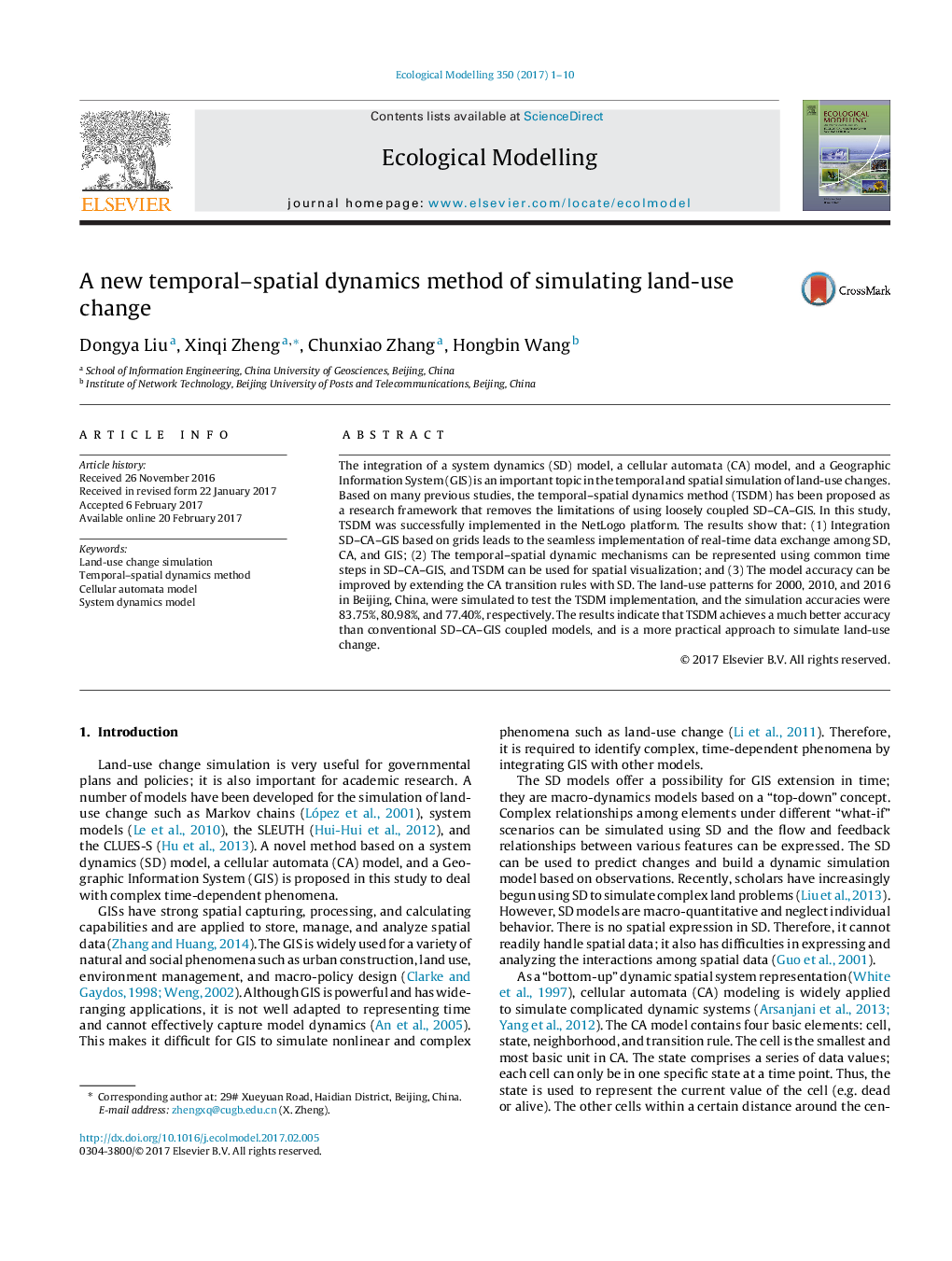| Article ID | Journal | Published Year | Pages | File Type |
|---|---|---|---|---|
| 5742230 | Ecological Modelling | 2017 | 10 Pages |
â¢A new temporal-spatial dynamics method of simulation land-use change is proposed.â¢The method implements data bidirectional communication between system dynamics model and cellular automata model.â¢The cellular automata transition rules are extended by the indicators in system dynamics.â¢The method can conveniently set different simulation scenarios by changing variables.
The integration of a system dynamics (SD) model, a cellular automata (CA) model, and a Geographic Information System (GIS) is an important topic in the temporal and spatial simulation of land-use changes. Based on many previous studies, the temporal-spatial dynamics method (TSDM) has been proposed as a research framework that removes the limitations of using loosely coupled SD-CA-GIS. In this study, TSDM was successfully implemented in the NetLogo platform. The results show that: (1) Integration SD-CA-GIS based on grids leads to the seamless implementation of real-time data exchange among SD, CA, and GIS; (2) The temporal-spatial dynamic mechanisms can be represented using common time steps in SD-CA-GIS, and TSDM can be used for spatial visualization; and (3) The model accuracy can be improved by extending the CA transition rules with SD. The land-use patterns for 2000, 2010, and 2016 in Beijing, China, were simulated to test the TSDM implementation, and the simulation accuracies were 83.75%, 80.98%, and 77.40%, respectively. The results indicate that TSDM achieves a much better accuracy than conventional SD-CA-GIS coupled models, and is a more practical approach to simulate land-use change.
Graphical abstractDownload high-res image (96KB)Download full-size image
